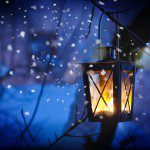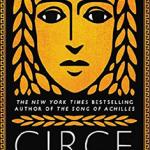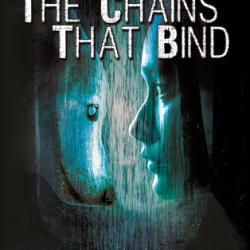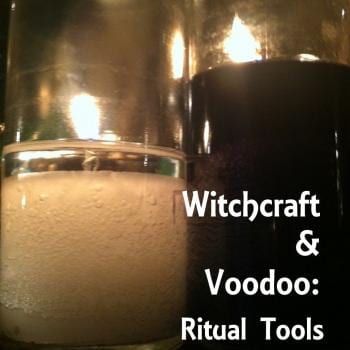There are a few novels out there that speak strongly of Pagan ideas, or draw us in with a presentation of Pagan or Pagan-like characters. In my last article, I cited eleven novels or novel series that I felt were the most influential; by which I mean that they spread Pagan ideas, made people want to become Pagans, or strongly influenced Paganism as it is currently practiced. In this article I will cite eleven more such works as I complete the countdown of my list of twenty-two. I have not excluded any genre (though fantasy is clearly the overwhelming majority). I have deliberately excluded popular re-tellings of myths or fairy tales but I have permitted modern extrapolations that make use of mythological characters. I have also deliberately excluded comics and graphic novels (so sorry, The Avengers did not make the list, and this rule also excludes all anime.)
Again, I have no proof of any of my choices other than popular observation. So this is not a scientific study; merely an opinion. If you disagree with my choices, I’m fine with that. For the record, I have read almost every book on this list.
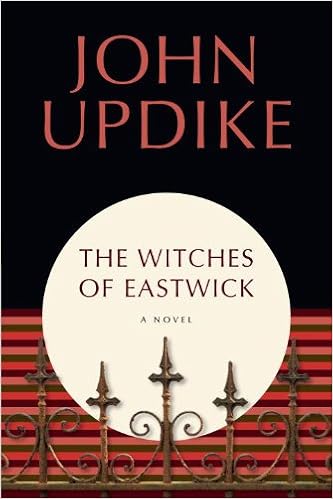 11. The Witches of Eastwick by John Updike (Popularization)
11. The Witches of Eastwick by John Updike (Popularization)
Ah! Modern witchcraft’s dirty little secret! Variously praised as “bold and daring” and cursed as “pure smut,” this extremely popular novel, published in 1984 in the days of the Satanic Panic, got chins wagging. The storyline focuses on a coven of three witches in a small American town in the late 1960s (who make a marvelous Maiden/Mother/Crone in the way they behave together, perhaps reminding Pagan readers of another popular coven of three witches who shall be mentioned later), each of whom acquired the powers of witchcraft after their husbands ceased to be part of the picture (one left hers, one was left by hers, and one was a widow). They are all artists; Alexandra is a sculptress and mother of one daughter (who makes Goddess figures,) Jane is a childless music teacher and orchestral musician, and Sukie is a journalist with six daughters. The three are obviously good friends despite their differences in age and social experiences, probably in part because they are socially shunned since they have no men in their lives. This encourages these already very independently-minded and strong-willed women to pursue their personal interests with no interference.
Enter Daryl Van Horne, who combines elements of Pan, Lucifer, and all the stories you’ve heard about Gerald Gardner. He seduces each of the women in turn and encourages them to play with their powers, causing scandal throughout the town. They eventually discover this but rather than tearing each other apart in a jealous rage they decide to share this unorthodox and slightly rude (but exciting) lover. That is, until he marries their young friend Jenny; whom they promptly curse. She subsequently dies of a rapid-spreading cancer, causing them to question themselves. Eventually due to their machinations Van Horne flees town with Jenny’s brother Chris, who is apparently now his lover. Afterwards the witches, who are disconcerted by the whole affair, each conjure up their ideal mate and leave town.
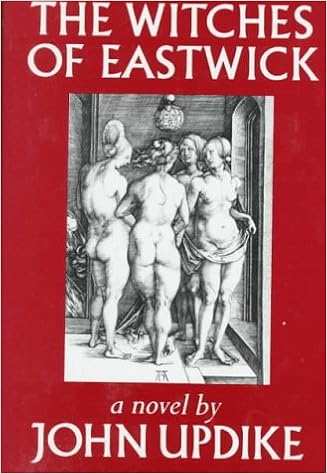 The combination is kind of what happens if you take the myth of the Burning Times and mate it to the more sex-positive Feminist Wicca that was the most popular form of witchcraft in the mid-eighties. It was also highly unusual in the eighties in that women who were the protagonists, and not the villains, were having sex with whom they liked without wanting to get married and maybe have babies (gasp!) Updike himself said that the novel was “about female power, a power that patriarchal societies have denied.” Though it also gets criticism because, on the surface, it seems like the witches are not fulfilled until they find their ideal man. But I disagree; this was kind of like a fractured fairy tale, which deliberately flipped the conventions of every classic fairy tale love story precisely on its head. Very heady stuff for the age of the RomCom. Keep in mind, also, that even though the “witch trial confessions” always had the accused women as victims of the devil, to whom they had submitted, Van Horne is definitely the plaything of the witches in this story.
The combination is kind of what happens if you take the myth of the Burning Times and mate it to the more sex-positive Feminist Wicca that was the most popular form of witchcraft in the mid-eighties. It was also highly unusual in the eighties in that women who were the protagonists, and not the villains, were having sex with whom they liked without wanting to get married and maybe have babies (gasp!) Updike himself said that the novel was “about female power, a power that patriarchal societies have denied.” Though it also gets criticism because, on the surface, it seems like the witches are not fulfilled until they find their ideal man. But I disagree; this was kind of like a fractured fairy tale, which deliberately flipped the conventions of every classic fairy tale love story precisely on its head. Very heady stuff for the age of the RomCom. Keep in mind, also, that even though the “witch trial confessions” always had the accused women as victims of the devil, to whom they had submitted, Van Horne is definitely the plaything of the witches in this story.
In 1987 this novel inspired a movie that drew the star power of the likes of Cher, Susan Sarandon and Michelle Pfeiffer as the witches and none other than Jack Nicholson as Van Horne. That’s how popular it was. Unfortunately in the typical misogyny of Hollywood they rewrote the plotline to cast Van Horne as being much more in control and manipulative than he was in the novel. However, that movie was one of the top movies of 1987. Other attempts to bring it to various screens failed.
In 1987, everybody was talking about these sexy and powerful witches. The Pagans were willing to overlook the slight scent of brimstone in Van Horne, and the stereotype of the bored housewife converting to witchcraft (or, more accurately, a mass movement of mature women coming into their own powers through the practice of witchcraft) was born. Nowadays nobody wants to admit this, but there aren’t many novels out there that can beat The Witches of Eastwick for popularizing witchcraft to the general public; so even though its witchcraft is utterly fiction, other than the way in which the witches related to one another and worked together for mutual magical benefit, it’s just shy of the top ten in my list.
I loved this book, with its interesting and believable protagonists and its sexy, tongue-in-cheek humour, but I admit I enjoyed it a lot more as a young twenty year old woman than I did when I first read it at fourteen, since there were quite a few things I didn’t get. I imagine that now that I’m forty it’s time for a re-read. And I’ve held on to my copy all these years, so obviously that was something I anticipated.
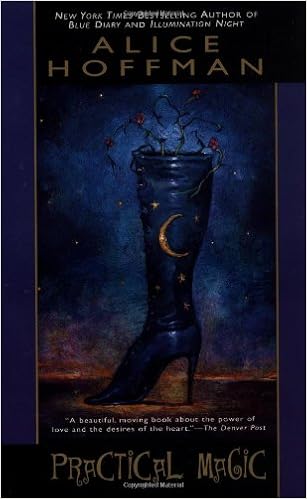 10. Practical Magic by Alice Hoffman (Popularization/Influence)
10. Practical Magic by Alice Hoffman (Popularization/Influence)
So there aren’t many novels out there that can beat The Witches of Eastwick for popularizing witchcraft to the general public. Except maybe this one. This 1995 novel is probably what witchcraft would actually look like if it had consistent, physically documentable powers (and some of the experiences described by the witches have happened to me or people I know). The women of the Owens family have been accused of witchcraft for generations. Gillian and Sally, our protagonists, are orphaned girls living with their aunts, who are scorned by day but at night entertain a parade of town women and men seeking love potions. They run a little apothecary business and support themselves that way, but the ostracism and general weirdness makes life difficult for too-responsible Sally and impulsive Gillian. Seeing the people who come to their house they swear off love and desire, but of course life intervenes. Gillian gets married and has two daughters of her own (who turn out to be a lot like their mother and their aunt). She is widowed early and she returns with the children to the family home at about the same time as Sally, who has been through three divorces and shows up with a body in the trunk of her car. Hilarity and witchcraft ensues.
This book would have been less known to the public were it not for the 1998 movie of the same name, starring Nicole Kidman as Gillian and Sandra Bullock as Sally; with Stockard Channing and Dianne West as the aunts. It was very popular but negatively reviewed by critics. It may have been the first movie ever to present witchcraft in a chick flick. And every single witch I knew at about the turn of the millennium had seen it.
The beauty of this book is that the witches are normal and human, and they have their weird family dynamics, just as we all do. I know many families in which witchcraft seems to run (mine is not so different,) and many of us can relate to this. And that’s one reason why this novel ranks higher in my list than Eastwick; because it also influenced us. Before this book you were hard pressed to find fam trads and certainly nobody would ever, ever consider selling their spellcraft services! Only psychic readings, Reiki, and ritual items were considered appropriate to sell, and even then, that was a hotly contested subject.
I’ll tell you something else too. After the movie came out, the Satanic Panic began to come to an end. I can’t prove that this was anything but a coincidence (and Buffy might have had something to do with it too, since its first season aired in 1997,) but I will just point out that it’s hard to be afraid of any group when they have been humanized. Hoffman’s witches were, first and foremost, normal human beings, even though they cast spells and the like. That just can’t be scary. And that’s the other reason that this one outranks Eastwick in my list.
I loved this book, more than I love the movie (which I do); though it can be somewhat challenging because it’s written in the present tense. It has recently been re-printed because Alice Hoffman has now written a few New York Times bestsellers and is considered an author of note (the kind of writing Oprah would recommend.)
 9. The Emberverse / The Change series by S.M. Sterling (Popularization/Influence)
9. The Emberverse / The Change series by S.M. Sterling (Popularization/Influence)
In this science fiction/fantasy series, the first book of which, Dies the Fire, was published in 2004, a failed experiment at Nantucket results in a significant Change in the laws of physics. No more internal combustion. No rockets. No electricity. No computers. No gunpowder. All that wonderful stuff — coal, gasoline, rocket fuel, gunpowder — fizzles and burns sullenly. So, it’s back to lanterns and swords and armour. And the people in the best position once this occurs are the medieval recreationists, many of whom happen to also be Pagan. These novels continue to make the New York Times bestseller list every time a new one is released, and are still in active print.
In the Pacific Northwest three feudal states form, led by former Society for Creative Anachronism members; the Georgian Wiccan Clan MacKenzie, formed by High Priestess Juniper MacKenzie and her covenmates; the mostly-Asatru Bearkillers, a military organization originally led by former Marine Mike Havel and his military elite, the A Listers; and the Christian group called the Portland Protective Association, originally formed by former SCA member and history professor Norman Arminger, his wife Sandra, his SCA entourage and former urban gang members, who set themselves up as King, Queen and feudal lords, and re-establish all the happy traditions of the Middle Ages like feudal conquest and an Inquisition, taking the Eye of Sauron as their heraldic symbol.
I was an SCA member and a Pagan. Everybody I knew had read the first three of these books. If it wasn’t cool enough to have real, 21st century Pagans as the good guys and Christians as the bad guys for a change, Sterling extensively researched Pagan traditions and the SCA before writing these novels and he did us proud. The character of Juniper is widely believed to have been based on Pagan medievalist filk singer Heather Alexander (now Alexander James Adams,) and Heather’s songs appear in quotations throughout the books, including her most famous piece, The March of Cambreadth.
And in a very interesting twist, one of the characters in the series has a vision that the Change was not the result of a failed science experiment after all, but a conscious decision by the Old Gods, working collaboratively, to Change the laws of physics so that we wouldn’t endanger the Universe anymore. And this is nicely explains my Universal creation theory; it comes out in the storyline that the gods were created by us and our belief, so that They could then create us, since They are beyond time and space. Though whether or not magic is real, or just has an impact because the world believes it’s real, is never quite explained. A rational explanation is always available for any magic that happens (at least, until much later.)
Mostly it was the second and third novels in the series that helped to popularize Wicca and Norse Paganism among the fertile grounds of the SCA, Renaissance Faires, and the sci-fi fandom communities. The heyday of Wicca 101 books of the 90s was over, but aided in part by Pagan filk singers and this series, Paganism continued to spread. And it was about at that time that it seemed like suddenly the ideas of the medievalists, such as a resurgence of the back-to-the-land movement, caught fire among the Pagans. Just like we did when all the witches were hippies, once again it became common for Pagan groups to do traditional weaving and spinning, to learn sword fighting, or to go out on hunting trips. That, plus the natural environmentalism of many Pagan paths, helped to lead us in droves to sustainable housing and farming movements. I think both groups are better for the exchange.
I have read the first trilogy but none of the rest of them yet (though I am collecting them). They were great! These are contemporary people with medieval technology, not medieval people. There’s a lot of tongue-in-cheek humour and more than enough references for any nerd to get a big jolt of nerd-happiness. I love the way the characters try to explain the stories of the 20th century to their children, who either never saw TV or barely remember it. And I love the characters and the world creation cannot be beat.
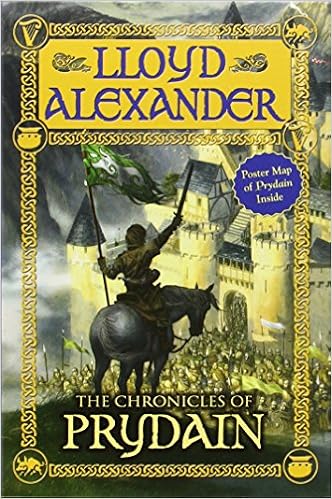 8. The Black Cauldron and The Chronicles of Prydain by Lloyd Alexander (Popularization/Influence)
8. The Black Cauldron and The Chronicles of Prydain by Lloyd Alexander (Popularization/Influence)
You know, I almost missed this one, but when a couple of people mentioned it in the comments of Part 1 I realized that I had to revise my list. These highly influential children’s novels, in particular The Black Cauldron, probably encouraged thousands of children to seek out and find the Celtic and Welsh Pagan gods. Published in 1965, The Black Cauldron was a Newbery Honor book and remains a classic of children’s literature; the final book, The High King, won a Newbery Award. It also inspired a Disney movie by the same name in 1985 (which actually kind of bombed at the box office, probably because of its first-time ever Disney animation PG rating; in other words, people didn’t know how to take it.)
I almost excluded it because this series is a retelling of events from The Mabinogion with a different viewpoint character, but it was a long time ago that I read it, and I feel, as I did with another work that will be mentioned later, that it adds something different and unique to the tale. It doesn’t follow the myths exactly, and it humanizes vast mythological themes by presenting them through the eyes of a very human boy, which changes its focus from the deeds of legendary people to a small person trying to survive, and making a big difference, in the deeds of legendary people. And it was awesome. And yes, you should read The Black Cauldron if nothing else, and you should make sure that your kids read it.

7. The Chronicles of Narnia by C.S. Lewis (Influence)
As perhaps the second greatest classic of children’s high fantasy of all time, published 1950 through 1956, I guess most of you expected to find this one here, but you’re probably asking me, why did it rate so much higher on the list than Tolkien’s Lord of the Rings?
First of all, because nearly every North American, as well as every English-speaking European, has read these novels, especially since The Lion, the Witch and the Wardrobe is usually a required book in school English programs; while many never do read Tolkien, largely because Tolkien is a more difficult read.
Second, because even if we have read both series, chances are that we read this one earlier (largely, again, because of the accessibility of the writing) and therefore, Lewis had a chance to prime our Pagan pumps long before we ever picked up Lord of the Rings.
Third, in a twist of cosmic irony, C.S. Lewis’ attempt to avoid using existing mythologies (like his friend Tolkien did) resulted in the writing of a mythology that, while consciously Christian in form, contained so much Paganism that it might as well have been. Kind of like the Scouts and the Girl Guides, really. A Witch Queen, doors to other worlds, echoes of Arthurian legends, the mythological cycles of Summer and Winter, fauns, Greek mythological elements, talking animals, the death and rebirth of the Sun King, Sacred Kingship and Queenship, Greek and Roman mythology, British and Irish fairy tales, and the Romantic English view of pastoralism; all very Pagan.
Of course I loved these books as a child. I’ve read them several times. I recommend them to every child in my life. And they’re still great to read, even as an adult.
 6. Harry Potter series by J.K. Rowling (Popularization/Influence)
6. Harry Potter series by J.K. Rowling (Popularization/Influence)
Okay, I know that I’m going to hear complaints about this one. No, I’m not saying that Rowling’s wizards and witches bear any more than a superficial resemblance to real-life Pagan witches; actually, all of them celebrate Christian holidays. But follow me for a bit.
First of all, I don’t know if you remember, but kids had stopped reading before the first book in this series Harry Potter and the Philosopher’s Stone, published in the US as Harry Potter and the Sorcerer’s Stone, came out in 1997 (1998 in the US.) Seriously. It was all about the video games and the TV shows. All of a sudden there was this book that every kid — and many adults — wanted to read. And then teen fiction exploded; and I have to tell you, as someone who works in a bookstore, that there is an amazing plethora of teen fiction out there now, and a lot of it touches on magic and the supernatural, which has increased our children’s exposure to ideas that we might consider Pagan. Also, when a child develops a habit of reading for pleasure, that child grows into an adult who reads for pleasure. This has made for a new generation of well-educated and thoughtful Pagan adults who have changed the face of Paganism. And the fandom, perhaps due to the books, or or perhaps due to the very successful movie series, became huge.
Second, that same generation of children grew up wanting to be witches and wizards. I mean, all of a sudden that was cool. When I owned a metaphysical shop, countless young adults came in and, when they realized that I was a real-life witch, they were enamoured and they wanted to know all about it.
 Third, the lore of Harry Potter’s world has changed the way we socialize and practice:
Third, the lore of Harry Potter’s world has changed the way we socialize and practice:
- Our wands have changed. Most witches who became witches before 1998 have tree branches with maybe some crystals or feathers on it. Most witches who became witches after 1998 have swirl-carved wood wands with beautiful grains and possibly one end that is pointier than the other.
- Also, witches had almost stopped using wands entirely for a while in favour of the athame. Now wands are back in style.
- Interest in herbalism and plant magic comes and goes in waves. It was common in the sixties, not nearly as common in the eighties and nineties (when I started,) and at the turn of the millennium it became popular again. I think that was partially due to Harry Potter too.
- It’s common in the Pagan community now for those of us with a sense of humour to use the language of Harry Potter as a shorthand. Most notably, “cowans” are now “muggles” in many places.
I’m a fan of these books, despite the many plot holes, and I especially love Rowling’s female characters; particularly, of course, Hermione Granger, who might have been me as a child with all her incumbent merits and flaws. I love that the hero did not get the girl in the story just because he did all the right things (which is in my opinion the most harmful myth we have ever taught to our children, regardless of gender). I love that interracial relationships were taken as a matter of course, and that the wise and kindly mentor character was a gay man with a tragic love affair in his past. I love that the characters subject to the most ridicule were important and valuable, and in many cases were the greatest heroes of the story. I love that almost no one was completely either good or evil; except perhaps Bellatrix Lestrange (who was probably just mentally ill,) Dolores Umbridge, and Lord Voldemort himself. And that’s the last reason why this book places number seven on this list; these are values that the Pagan community generally agrees are good and important, and these books taught them to a whole generation.
Well, they all made my list. Perhaps some “concerned Christians” are right; perhaps Harry Potter, Narnia, and the Lord of the Rings do encourage children to grow up and practice witchcraft!
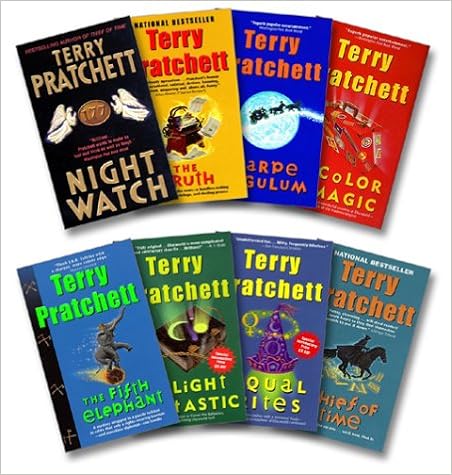 5. Discworld series by Terry Pratchett (Influence)
5. Discworld series by Terry Pratchett (Influence)
I was surprised that no one suggested this series in the comments of the first part of the article, but perhaps that’s because most of my readers are from North America. The incomparable Terry Pratchett published The Colour of Magic in 1983 and subsequently became the bestselling UK author of all time until he was overtaken by J.K. Rowling sometime in the 2000s. Discworld novels won the Prometheus Award and the Carnegie Medal and fourteen Discworld novels made the BBC’s Big Read top 200. The last one, The Shepherd’s Crown, was published this year, after Pratchett’s death in 2014. They remain a phenomenon around the world, but most notably in Pratchett’s native Britain, where there have been numerous adaptations, including radio productions, stage productions, a series on popular science, an animated series and several top-budget BBC productions made from his wonderfully humourous and insightful books.
It’s not so much the fantastical aspects of Pratchett’s series that were so influential. It’s the way that he used mythology, fairy tales, Tolkien, Robert E. Howard, Lovecraft and Shakespeare to satirize human nature, social issues, politics, religion, and current events. In his work we Pagans can do what we tend to do well; find inspiration in myth and story that we can apply to our own lives, here and now.
Mr. Pratchett, a lifelong rational atheist, might be as horrified as C.S. Lewis if he knew how many witches he has encouraged and influenced. But perhaps not. Discworld wizards are a combination of charlatans and particle physicists who structure themselves like a Medici merchant guild. Discworld witches lack occult associations (though people who are not witches seem determined to hang that image on them). They function as herbalists, adjudicators and wise women, and they make use of a combination of folk medicine and “headology” (read: pop psychology and the fine art of manipulation) to accomplish their mostly benevolent ends. Granny Weatherwax, Nanny Ogg, and the third member of their coven, who variously has been Magrat Garlick, Agnes Nitt, and Tiffany Aching, are hauntingly familiar stereotypes of various witches that we all have known.
Mr. Pratchett, in his twisted Yuletide tale The Hogfather, in which the incarnation of Death is required to stand in for Discworld’s version of Santa Claus (with all ensuing hilarity) said what is perhaps the most insightful thing I’ve ever heard about Pagan theology; and this is only one such example:
Courtesy of BBC.
I wish I’d read all of these but I’m still working on it. I absolutely adore them. The Wyrd Sisters (1988) is required reading in my tradition and I included it and I Shall Wear Midnight in my list of A Few Books that I Think Every Witch Should Read.

4. The Mists of Avalon by Marion Zimmer Bradley (Popularization/Influence)
This one surprises no one, I’m sure. This extremely popular and influential 1983 novel by Marion Zimmer Bradley is a retelling of the Arthurian legends from the point of view of the principle female characters; in particular Morgaine (Morgan le Fay,) now cast as a Celtic priestess of a matriarchy who is trying to save her culture and people from the patriarchal Christian culture that is “invading” the British Isles. As Wikipedia says, “The Mists of Avalon stands as a watershed for feminist interpretation of male-centered myth by articulating women’s experiences at times of great change and shifts in gender-power. The typical battles, quests, and feuds of King Arthur’s reign act as secondary elements to the women’s lives.” It won the 1984 Locus Award for Best Fantasy Novel and it spent months on the New York Times bestseller list. There was a time that, when asked about what Paganism was all about, Pagans would reply, “Have you read The Mists of Avalon?”
There can be no question, either, of what the author intended. Bradley herself said about her book, “About the time I began work on the Morgan le Fay story that later became Mists, a religious search of many years culminated in my accepting ordination in one of the Gnostic Catholic churches as a priest. Since the appearance of the novel, many women have consulted me about this, feeling that the awareness of the Goddess has expanded their own religious consciousness, and ask me if it can be reconciled with Christianity. I do feel very strongly, not only that it can, but that it must… So when women today insist on speaking of Goddess rather than God, they are simply rejecting the old man with the white beard, who commanded the Hebrews to commit genocide on the Philistines and required his worshipers daily to thank God that He had not made them women… And, I suppose, a little, the purpose of the book was to express my dismay at the way in which religion lets itself become the slave of politics and the state. (Malory’s problem … that God may not be on the side of the right, but that organized religion always professes itself to be on the side of the bigger guns.) … I think the neo-pagan movement offers a very viable alternative for people, especially for women, who have been turned off by the abuses of Judeo-Christian organized religions.”
Life began to imitate art. My first Great Rite was based on the ritual detailed in this book; as was a ritual community created in Vancouver that serves as the heart of the community connection in the Lower Mainland and is still going strong after more than twenty years. And I know of at least three more major ritual events in Canada that likely found their origin in a similar way, because they started about the same time and have similar traits (such as a certain Ontario Stag King tradition). In the UK, Mists helped to solemnize the marriage of Wicca to all things Arthurian, and all over the world it became an intrinsic part of Goddess worship and feminist witchcraft. Most of us were influenced by this book if we had any connection at all to the Pagan community during the eighties or early nineties, whether we care to admit it or not.
Unfortunately Bradley has since been implicated in a nasty snarl of child abuse, so we must confront the question of how much a work of art reflects the artist who created it. And I guess that’s up to each individual to decide. Personally, though I am of course horrified by Bradley’s actions and the connection to our community, I loved this book, have read it many times and will do so again, and I found it to be a powerful influence on my Craft, despite the awareness that Bradley is not a nice person. I even included it in my list of A Few Books that I Think Every Witch Should Read.
3.  The Goat-Foot God and The Sea Priestess by Dion Fortune (Influence)
The Goat-Foot God and The Sea Priestess by Dion Fortune (Influence)
If I had to name five people that were the most significant in establishing the modern metaphysical movement, the unequalled Dion Fortune would certainly make the list. And she wrote a series of books, both fiction and non-fiction, that intentionally revealed occult elements to those who knew what to look for. Fortune was a prominent occultist and mystic, a Gnostic, and a Theosophist. She eventually went on to found her own occult order, and her magical experiment, the Magical Battle of Britain, may have actually stopped the Nazis from invading Britain (I’m just sayin’).
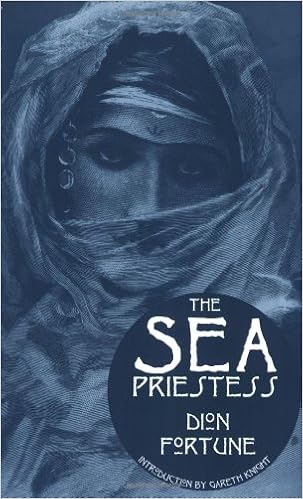 The Goat-Foot God was published in 1936, and it’s a story about a man at a crossroads of his life who is seized by a vision of a past life as a heretic monk who undertook the worship of Pan. He is driven to try to recreate a temple space to the Old Gods. Her Pan is the pastoral Pan of the Romantic movement, not the Hellenic Pan, and almost certainly directly shaped our image of the Horned God. The Sea Priestess was published two years later, and it tells the story of a man who falls in love with a priestess of the Sea and Moon goddess, named Vivienne le Fay Morgan, who is unlike any woman he has ever known because of the way in which the Goddess and her occult work has touched her. The Goddess is recognizably the Wiccan Star Goddess, and the goal of the pair becomes to manifest the Goddess in this world by Drawing Down the Moon. Scholars acknowledge her direct influence on the rediscovery of the Sacred Feminine and the Goddess in modern popular culture.
The Goat-Foot God was published in 1936, and it’s a story about a man at a crossroads of his life who is seized by a vision of a past life as a heretic monk who undertook the worship of Pan. He is driven to try to recreate a temple space to the Old Gods. Her Pan is the pastoral Pan of the Romantic movement, not the Hellenic Pan, and almost certainly directly shaped our image of the Horned God. The Sea Priestess was published two years later, and it tells the story of a man who falls in love with a priestess of the Sea and Moon goddess, named Vivienne le Fay Morgan, who is unlike any woman he has ever known because of the way in which the Goddess and her occult work has touched her. The Goddess is recognizably the Wiccan Star Goddess, and the goal of the pair becomes to manifest the Goddess in this world by Drawing Down the Moon. Scholars acknowledge her direct influence on the rediscovery of the Sacred Feminine and the Goddess in modern popular culture.
Did Gardner read these books before he (re)invented Wicca? Almost certainly. The occult community in England at the time was very small and everybody knew everybody else. The Goat-Foot God was so controversial that no one would publish it, so Fortune was obliged to publish it herself. I am certain she must have extolled her work to everyone she knew in the occult community, who then would have shared it, because that’s what occult authors do among their friends. Also, Dion Fortune’s work in general introduced average people to what, until then, had been carefully-guarded occult secrets, and directly shaped the modern occult movement and our understanding of metaphysics. Both of these books made my recommended witch book list.
The cool thing about these books is that the actual “supernatural elements” are limited. The characters behave exactly like mystically-driven real people do, and their visions look a lot like real visions to me. If you can overlook the early twentieth century-isms, like unconscious classism, racism and sexism, then these are excellent, well-written stories. The Goat-Foot God was hard to get into, but The Sea Priestess was gripping after the first chapter. Well worth the read.
 2. Stranger in a Strange Land by Robert A. Heinlein (Influence)
2. Stranger in a Strange Land by Robert A. Heinlein (Influence)
Love him or hate him, I don’t think there’s any way to deny that Heinlein’s 1961 classic, Hugo award winning science fiction story about a man raised as a Martian who came to Earth, cast a large shadow. Its influence spread far beyond science fiction; in 2012 the Library of Congress named it as one of 88 “Books That Shaped America.” Terms from the novel, such as “grok” and “fair witness,” entered our language after its publication. As an interesting aside, this novel and his first novel, Double Star, were the first known appearances of the idea of waterbeds, and their inventor was refused a patent on that basis.
So why does it get the number two spot in my list?
Well, because an entire Pagan church organization was based on it. And that group, the Church of All Worlds, was one of the most influential Pagan groups in American history.
CAW was the first legally incorporated Pagan church in the United States (as of 1968). They went on to publish the most influential Pagan magazine of all time, Green Egg, published off and on since the incorporation of the Church. It’s hard to appreciate the power of Green Egg in the modern internet age; but up until the nineties, magazines were the only way in which countercultural communities like Paganism could connect and learn about one another, and Green Egg was the world’s most widely read Pagan magazine for many years.
One of the CAW’s founders, Morning Glory Zell-Ravenheart, coined the term “polyamoury” for the interconnected webs or constellations of lovers and relationships that were the social norm on Heinlein’s Mars (which was the foundation, along with the Martian custom of “water sharing,” for the Church of All Worlds.) And the other major founder, Oberon Zell-Ravenheart, a sort of real-life Dumbledore, was one of two men (the other being Isaac Bonewitz) who claimed to have coined the term “Neo-Pagan.” Certainly Oberon Zell (who went through many naming incarnations) was one of the most well-known Pagans in the American Pagan community, who frequently appeared on TV and radio to explain Paganism to bewildered cowans. The couple and their partners also bred unicorns (you remember those one horned goats that appeared in all kinds of 1980s fantasy films? Yes, that was them).
Terms and customs from the Church of All Worlds have strongly influenced modern Pagan practice in direct ways as well; polyamoury, social libertarianism and acceptance of a variety of religious paths are indelible parts of our community; and “May you never hunger” and “may you never thirst” have become a common part of many Pagan traditions.
Heinlein uses his protagonist’s open-mindedness to reevaluate the ideas of religion, money, monogamy, and the fear of death. I imagine he was equally stunned as Terry Pratchett was by its influence on the Pagan community. He wrote, “I was not giving answers. I was trying to shake the reader loose from some preconceptions and induce him to think for himself, along new and fresh lines. In consequence, each reader gets something different out of that book because he himself supplies the answers … It is an invitation to think – not to believe.”
Heinlein is often criticized as being sexist, racist, homophobic or fascist, and I don’t think that any of that is true (quite the opposite, actually, and he often satirizes or mocks such beliefs — please reference the literary technique known as the “unreliable narrator”). I’m sort of a fan. I loved this book and I also put it on my list of recommended witch books.
And the number one most influential novel to modern Paganism is . . .
 1. High Magic’s Aid by Gerald Gardner (Popularization)
1. High Magic’s Aid by Gerald Gardner (Popularization)
I have never read this book. However, to my mind there can be no doubt that this was the most significant Pagan-related novel of all time. In 1949 Gerald Gardner, who of course went on to become “the father of modern Wicca,” wrote a novel that involved a witch assisting a ceremonial magician. In this he revealed (or invented) a great deal of information about the folk witchcraft traditions of England that would become known as Wicca. This was the first book in which the word “the wica” was used to describe the practitioners of this witch-cult. The reception of the book, and the subsequent seekers asking questions, gave Gardner the confidence to publish his non-fiction work Witchcraft Today in 1954, after England’s laws forbidding witchcraft had been repealed. So even though this book is almost unknown to modern readers, it could be viewed as kind of a Pagan “ur-document,” since it certainly influenced all of those who originally helped to form Neo-Paganism and Wicca. I believe that as a result, this novel was directly responsible for the modern Pagan movement in its entirety. Even though I’ve never read it, I’m sure that without it, there would be no modern Paganism at all; and that trumps all other fictional works on the topic hands down.

Honourable Mention: The Wind in the Willows by Kenneth Grahame (Popularization/Influence) — I had to bump this in order to make some room on the list, which I felt was fair, since the only thing that was really influential in this talking animals fairy tale, as far as Paganism goes, was a general ethic of Pastoralism, and the brief appearance of Pan, who subsequently made the animals forget His presence. However, this book, published in 1908, must have inspired all the people who would eventually grow up to become the founders of the modern Pagan movement, and it is often listed among the “must read” classic Pagan books. And it’s also worth noting that Pan was the centerpiece of the original cover image, as shown here, so obviously the author meant that to be important. When I read it years later, it reminded me of the Tales of the Green Forest that I read as a child, so I’m sure it must have significantly influenced future children’s literature as well.
First: 22 Novels that Popularized (and Influenced) Pagan Ideas (Part 1 of 2)
Like Between the Shadows on Facebook and never miss a post!


